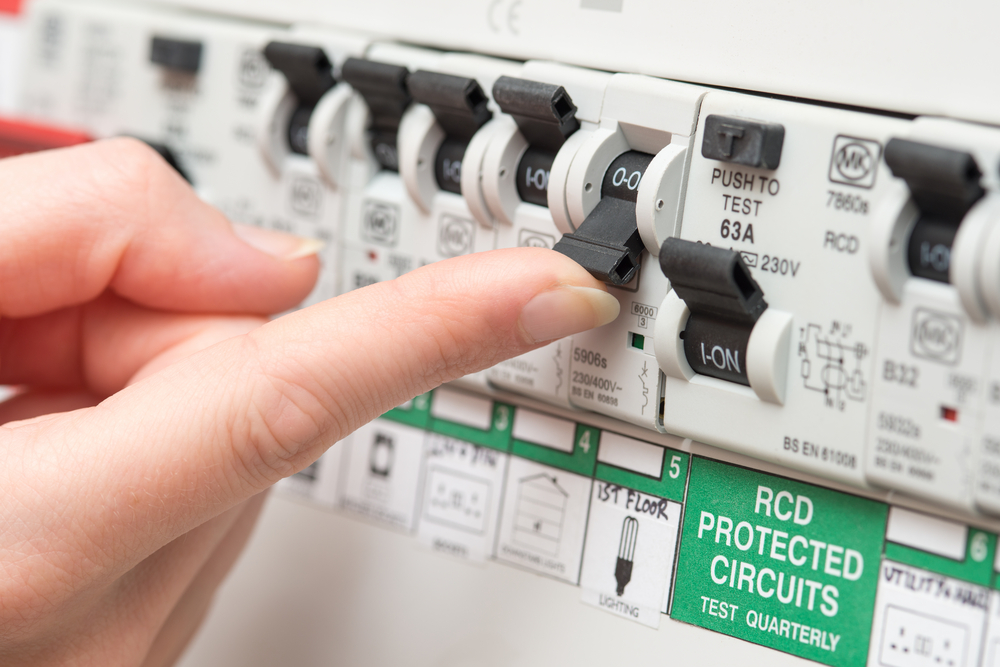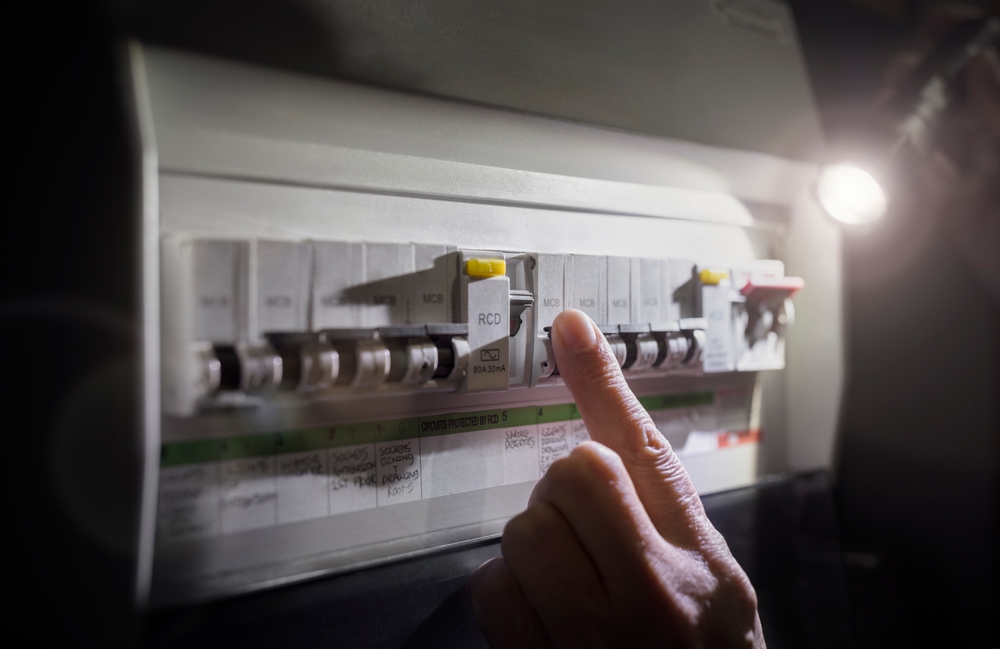
As storm season rolls in, protecting your home’s electrical system becomes more important than ever. Experts at Allround Electrical know that a modern switchboard isn’t just a control panel; it’s your home’s first line of defence against electrical hazards caused by lightning, power surges, and moisture. In this guide, we’ll explain how switchboard upgrades enhance safety during storms by incorporating life-saving RCDs, built-in surge protection, and weather-resistant features that help guard against water ingress. We’ll also explore why older systems may no longer meet current safety standards and how upgrading can offer greater reliability, compliance, and peace of mind when wild weather hits. Let’s get started.
In extreme weather conditions, such as storms, ensuring the safety and integrity of your electrical system becomes paramount. RCD (residual current device) safety switches play a crucial role in protecting people and property during such events. Let’s explore how RCDs help prevent shocks and fires and why they’re a must-have in any modern switchboard.
RCDs are designed to detect imbalances in the flow of electric current. Under normal circumstances, the current flowing through live and neutral wires is balanced. However, if there is a fault, such as a person accidentally touching a live wire, the current will leak to the ground, creating an imbalance. The RCD quickly detects this discrepancy and cuts off the power supply, typically within 10 to 30 milliseconds.
Storm conditions often lead to increased moisture levels, which can heighten the risk of electric shocks. Water is a conductor of electricity, and any compromised electrical insulation or exposed wiring can become hazardous. RCDs provide an essential layer of protection in these scenarios, ensuring that any leakage currents caused by water exposure are swiftly addressed.
Electrical faults, such as short circuits or ground faults, can generate excessive heat, potentially leading to fires. RCDs prevent this by detecting faults early and disconnecting the circuit before overheating occurs. This quick response is key to stopping fires, especially during storms when your system is under more stress.
During a storm, power surges are common, often resulting in overloaded circuits. An overloaded circuit can cause wires to overheat and ignite. RCDs, when combined with circuit breakers, can help mitigate this risk by ensuring that any anomaly is quickly addressed, thus preventing fire hazards.
In Australia, safety regulations mandate the inclusion of RCDs in new homes and during major renovations. RCDs are now standard in new homes and renovations, offering upgraded protection that meets today’s safety expectations.
Having RCDs installed provides peace of mind, knowing that your electrical system is safeguarded against the unpredictable nature of storms. This assurance allows homeowners to focus on other storm preparations, confident that their electrical safety is well managed.
Modern RCDs are designed to be versatile and compatible with various electrical systems. Whether for residential, commercial, or industrial applications, RCDs can be seamlessly integrated into existing switchboards or included in new installations, providing a flexible safety solution for any setting.

It’s critical to understand the importance of protecting residential and commercial properties from the unpredictable forces of nature, especially during storm season. One of the most effective ways to safeguard electrical systems is by incorporating surge protection into modern switchboard setups. This section will discuss how lightning strikes and power surges can destroy electronics and why surge protectors are indispensable components of a resilient switchboard system.
Lightning strikes and power surges are two of the most common threats during storm season. A lightning strike can cause an immediate and catastrophic power surge, leading to damage.
Power surges happen when voltage suddenly spikes in your electrical system. This spike in electricity can originate from external sources like lightning or internal events such as the switching on and off of high-power devices.
Electronics are designed to operate within a specific voltage range. Any deviation, especially a surge, can cause immediate or cumulative damage. This often results in hardware failure, data loss, and even complete destruction of sensitive electronic equipment. Given the increasing reliance on electronic devices, the potential for loss is significant.
Integrating surge protection into a switchboard is an essential strategy for mitigating the risks associated with power surges.
Surge protectors work by redirecting excess voltage safely into the ground, keeping it away from your devices. They act as a barrier between the incoming high voltage and the sensitive electronics within a building, effectively absorbing or redirecting the surplus energy.
A modern switchboard equipped with a whole-house surge protector provides comprehensive protection. By installing surge protection devices (SPDs) at the switchboard, you ensure that all circuits and connected devices receive a baseline level of protection against surges.
Water and electricity are a dangerous mix, and even small amounts of moisture can lead to short circuits, equipment failure, or serious safety hazards. That’s why modern switchboards are designed with weather-resistant materials and smart layouts that help keep water out and your power supply safe.
You don’t need a flood to have problems. Just a small leak or too much humidity can affect safety and performance. Understanding these risks is crucial, especially during storm season when exposure to wind-driven rain, flooding, and condensation is at its peak. Here are some of the most common and dangerous risks associated with water entering electrical components:
Modern switchboards are engineered with storm safety in mind, and one of their advantages is their ability to resist moisture. Whether you’re dealing with coastal humidity or heavy rains, having a switchboard designed to handle wet conditions can make all the difference in protecting your home and family. Here are the standout features that help modern switchboards prevent moisture ingress:
In electrical safety, compliance with current standards is paramount. Modern switchboards play a role in ensuring safety and reliability. This section tackles the evolution of electrical safety regulations and highlights why older switchboards often fall short, emphasising the importance of compliance for homes.
Electrical safety rules have changed a lot since electricity first entered homes. Initially, regulations were minimal, focusing primarily on preventing immediate hazards, like fires and electrocution. As technology advanced and the understanding of electrical risks deepened, regulatory bodies recognised the need for more comprehensive standards.
In Australia, electrical safety standards are governed by a combination of federal, state, and industry-specific regulations. In recent years, standards have evolved to address emerging technologies and risks associated with an increasingly electrified world. The Australian Standards (AS) and Wiring Rules (AS/NZS 3000) are regularly updated to reflect the latest safety improvements, such as increased protection against electric shocks, improved fire safety through better circuit protection, and specific guidelines for storm-prone regions.
Older switchboards, many of which are still in use today, were designed to meet the standards of their time, which did not account for the complexities of modern electrical systems. Older systems often miss key safety features that help prevent electric shocks. Without devices, older switchboards pose a risk during storm season when electrical faults are more likely to occur.
Another critical shortcoming of older switchboards is their inability to manage electrical loads effectively. Modern homes use electrical devices, leading to increased demand on electrical systems. Older switchboards may not be equipped to handle these loads, resulting in overloaded circuits, which can cause fires or damage to electrical infrastructure, particularly during storms when additional strain is placed on the system.
Older switchboards are also more susceptible to environmental factors such as moisture and corrosion, which are exacerbated during stormy weather. The lack of modern protective coatings and enclosures makes these systems vulnerable to damage.
When storm season strikes, your home’s first line of electrical defence should be a modern, compliant switchboard. From life-saving RCDs and built-in surge protection to weather-resistant designs that keep moisture at bay, today’s switchboards are purpose-built to handle Australia’s toughest conditions. If your current setup is outdated or lacks these critical safety features, now is the time to act. Don’t wait for a blackout or fire to expose vulnerabilities. Act now to protect your family and home before the next storm hits. Contact Allround Electrical today for a professional assessment and discover how a switchboard upgrade can bring peace of mind all year round.



